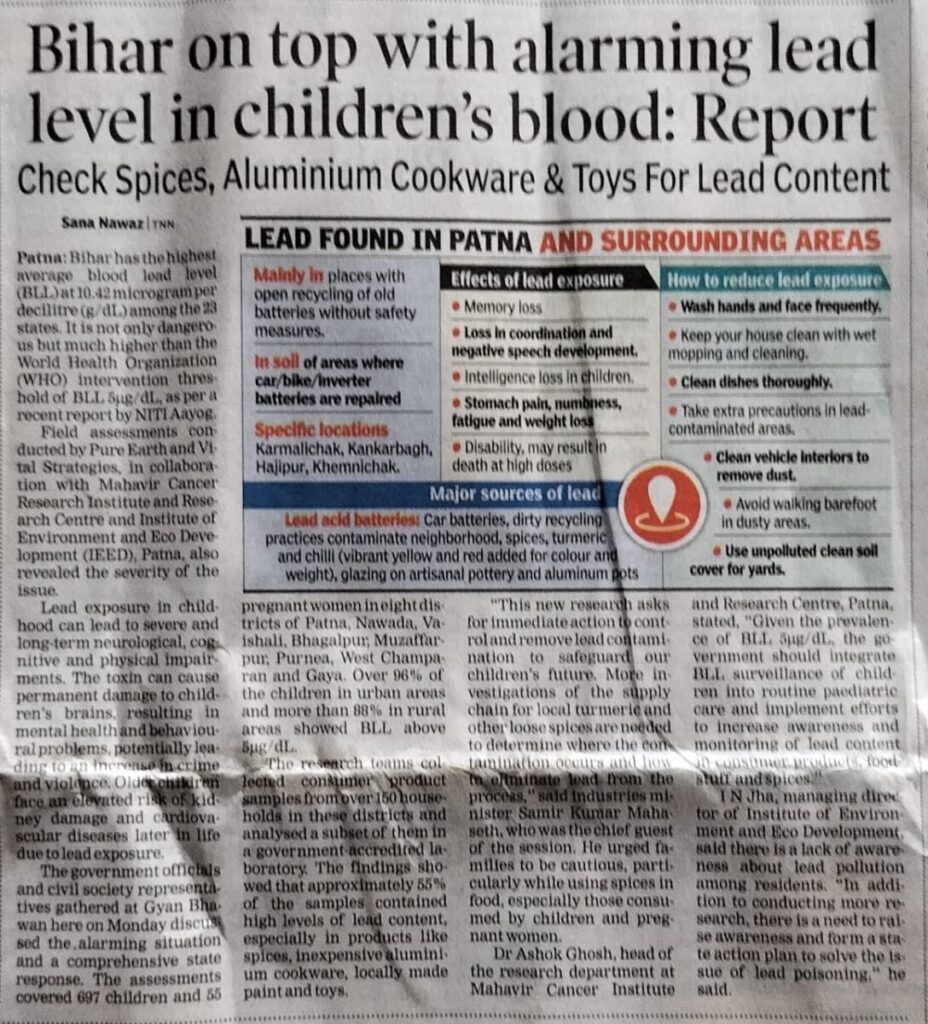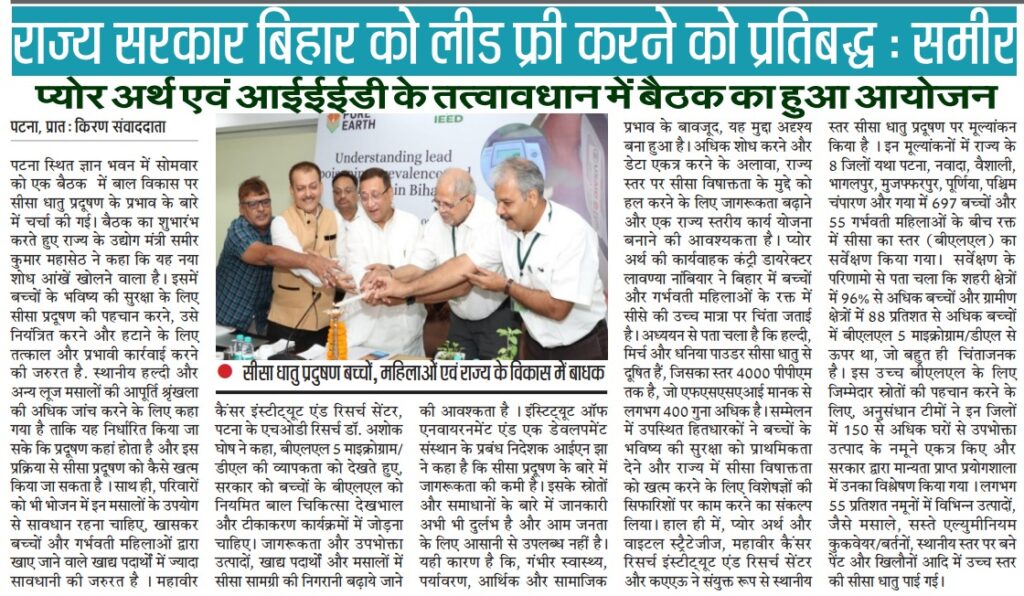Written By: Sandeep Dahiya, Director Advocacy and Communications, Pure Earth India
This July, Pure Earth, the Institute of Environment and Eco-Development (IEED), Vital Strategies and Mahavir Cancer Institute and Research Center convened a half-day, high-level conference “Understanding Lead Poisoning Prevalence and Solutions in Bihar” at Gyan Bhawan, Patna. The conference shared the recent findings of Bihar blood lead level testing and home-based assessments with state stakeholders.
The aim of the overall effort was to understand the prevalence of lead poisoning across Bihar and identify potential sources of exposure. The panelists and participants also discussed measures that the government and non-governmental actors in Bihar could potentially take to reduce and mitigate this burden of lead poisoning in the state.
Over 60 participants, including representatives from government and non-governmental organizations attended the event. Hon’ble Industry Minister Sri Samir Kumar Mahaseth and Ragini Mishra from the State Health Society, Department of Health were present, as well as representatives from the Bihar State Pollution Control Board, State Environment Impact Assessment Authority, All India Institute Of Medical Science (AIIMS), and State heads of UNDP, UNICEF, World Bank, Save the Children, and other influential state organizations.
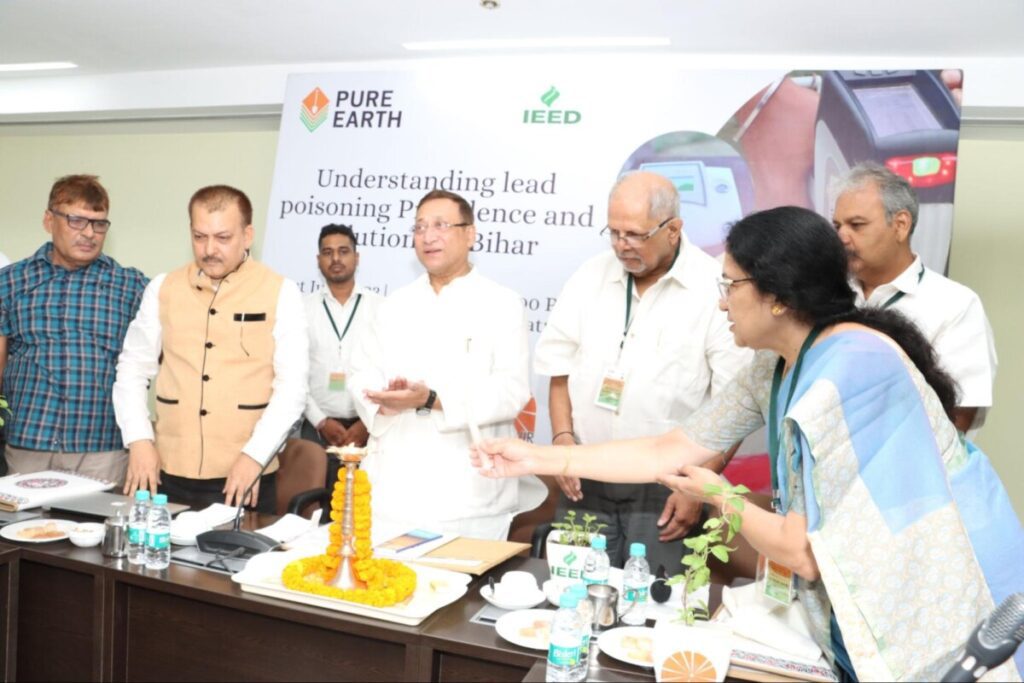
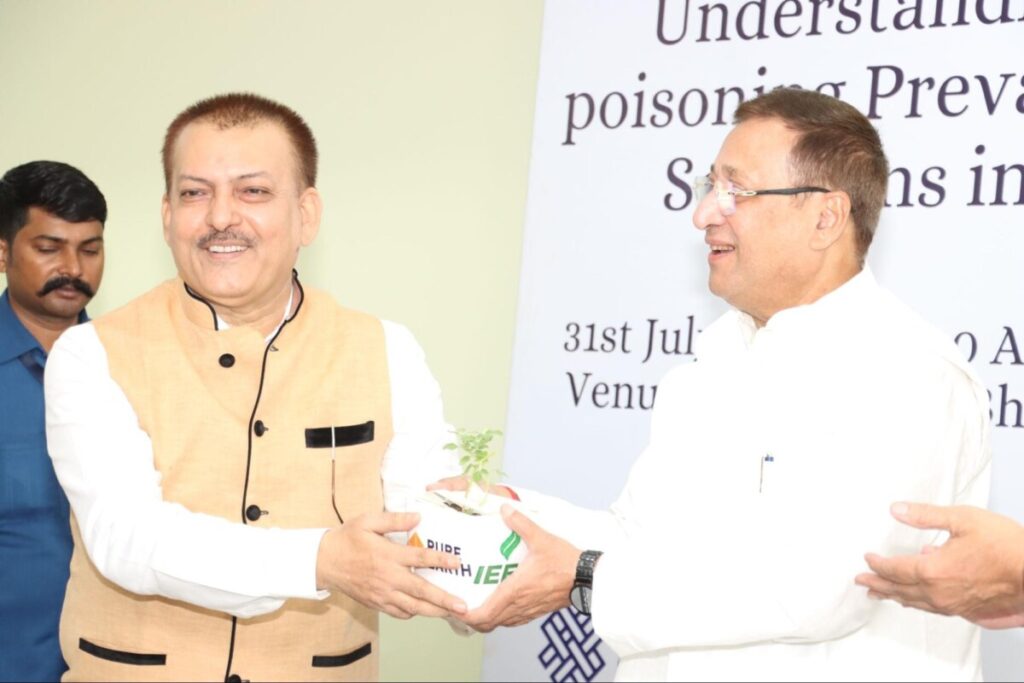
Pure Earth and Vital Strategies in collaboration with Mahavir Cancer Research Institute and Research Centre and IEED presented the recently concluded field assessment results. These assessments included a survey of blood lead levels (BLL) among 697 children and 55 pregnant women in eight districts, namely Patna, Nawada, Vaishali, Bhagalpur, Muzaffarpur, Purnea, West Champaran, and Gaya.
The results showed that more than 96% of children in urban areas and over 88% of children in rural areas had BLLs above 5 µg/dL, which is concerning. To identify the sources responsible for this high BLL, the research teams collected consumer product samples from more than 150 households in these districts and analyzed a subset of them in a government-accredited laboratory. The results from both assessments were presented at the conference. Approximately 55% of the samples contained high levels of lead content in various products, such as spices, especially turmeric, inexpensive aluminum cookware, locally made paint, and toys, among others.
The presenters also highlighted that more than 800 million children, i.e. 1 in 3 kids globally are exposed to high lead levels. In India, 1 in 2 children experience dangerous levels of lead, with around 23 states exceeding the WHO intervention threshold of BLL ≥ 5 µg/dL. Bihar has the highest average BLL at 10.42 μg/dL, ranking first among all states.
Lead exposure in childhood can cause long-term neurological, cognitive, and physical impairment. This toxin can harm children’s brains permanently, leading to mental health and behavioral problems, and may even increase the tendency for crime and violence. Older children face an increased risk of kidney damage and cardiovascular diseases later in life.
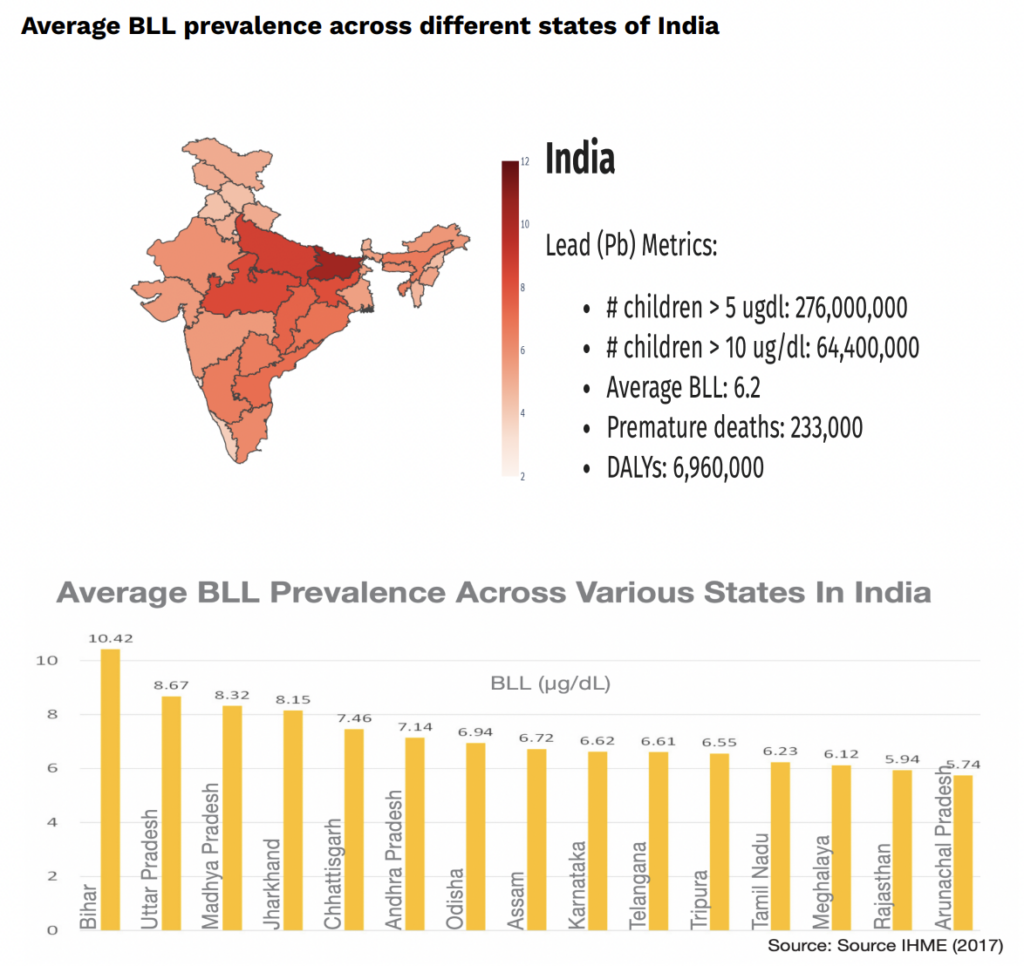
After the Q&A session, Ragini Mishra from State Health Society, Bihar Health Department said, “The health department is capable of and willing to conduct statewide blood lead level testing, but without guidance from the top and political will, it is challenging to mobilize manpower and resources.”
The Hon’ble Minister Sri Samir Kumar Mahaseth, Department of Industries, Government of Bihar, stated that the new research was an eye-opener and called for immediate and urgent actions to identify, control, and remove lead contamination. He also emphasized the need for more investigations of the supply chain for local turmeric and other loose spices to determine where the contamination occurs and how to eliminate lead from the process. He assured the participants and the media that the Government of Bihar would take all the necessary steps to make Bihar a lead pollution-free state.



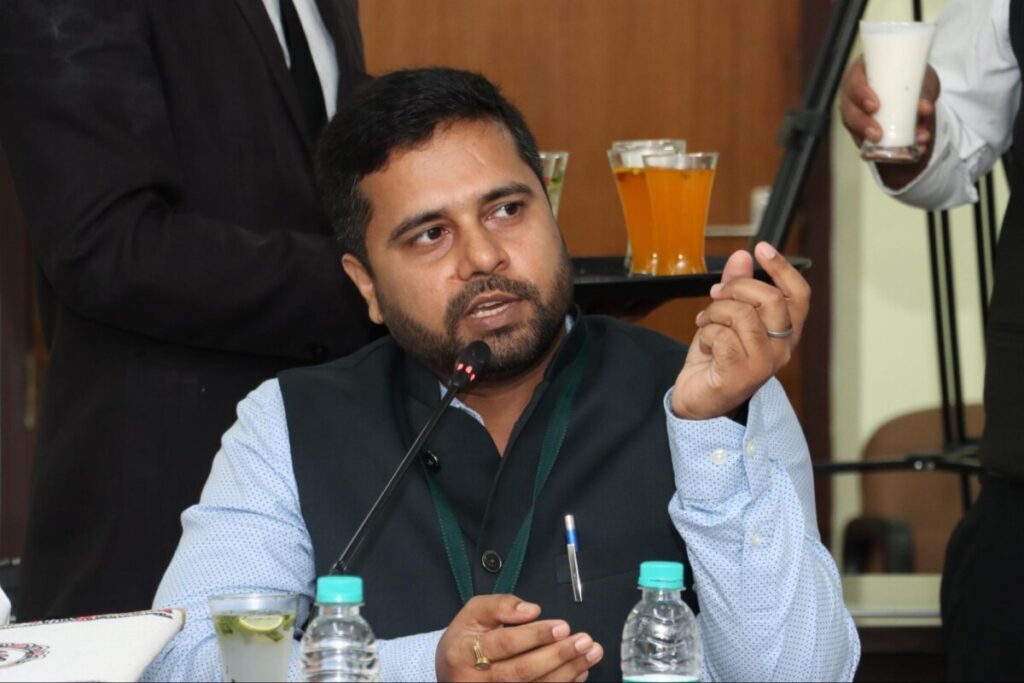
The following recommendations were put forward for the Government of Bihar:
- Establish Interdepartmental Lead (Pb) Coordination Group – An expert group should be established to design and oversee all activities. Housed in the Department of Health, this group will have representation from various departments (since lead poisoning is a cross-cutting issue). The group can also establish sub-groups for specific issues, convene technical and expert working groups, issue guidance documents for implementation, and the like.
- Blood lead level (BLL) testing of children and pregnant women should take place at state health and wellness clinics, other primary health centers such as Anganwadi centers, maternity centers, and primary and secondary schools, or where possible, BLL should be added on as part of the state and national health surveys to determine where in Bihar the exposures are significant, and in which population and geographic locations.
- Source analysis to determine the reasons that certain urban and rural areas register elevated BLLs. This, in turn, will allow state government and other changemakers to make informed decisions and design and undertake appropriate interventions
- Effective action to eliminate known sources of lead exposure. Programs will vary according to the sources, which may include: (i) adulterated spices (turmeric) or other lead-contaminated foods, (ii) lead in inexpensive cookware (ceramic and metallic), (iii) improper recycling of scrap batteries, (iv) lead in local paint, (v) Ayurvedic medicines, and (vi) traditional cosmetic products (kajol, sindhoor). Some of these are well-known already and worthy of action immediately. Others require more research and/or blood testing to determine the amount of impact.
- State lead awareness campaign – Widespread lack of awareness about the issue and the solutions, or a lack of understanding about the breadth and seriousness and long-term impacts of lead perpetuates inertia. State-initiated efforts to publicize enforcement actions, posting short video messages, social media posts, and public events through print media, TV, and radio messages in local languages could be effective methods of raising awareness about the issue. Effective change requires acknowledging and bridging the knowledge gap, building broad awareness and understanding of the problem, the urgency and the solutions.
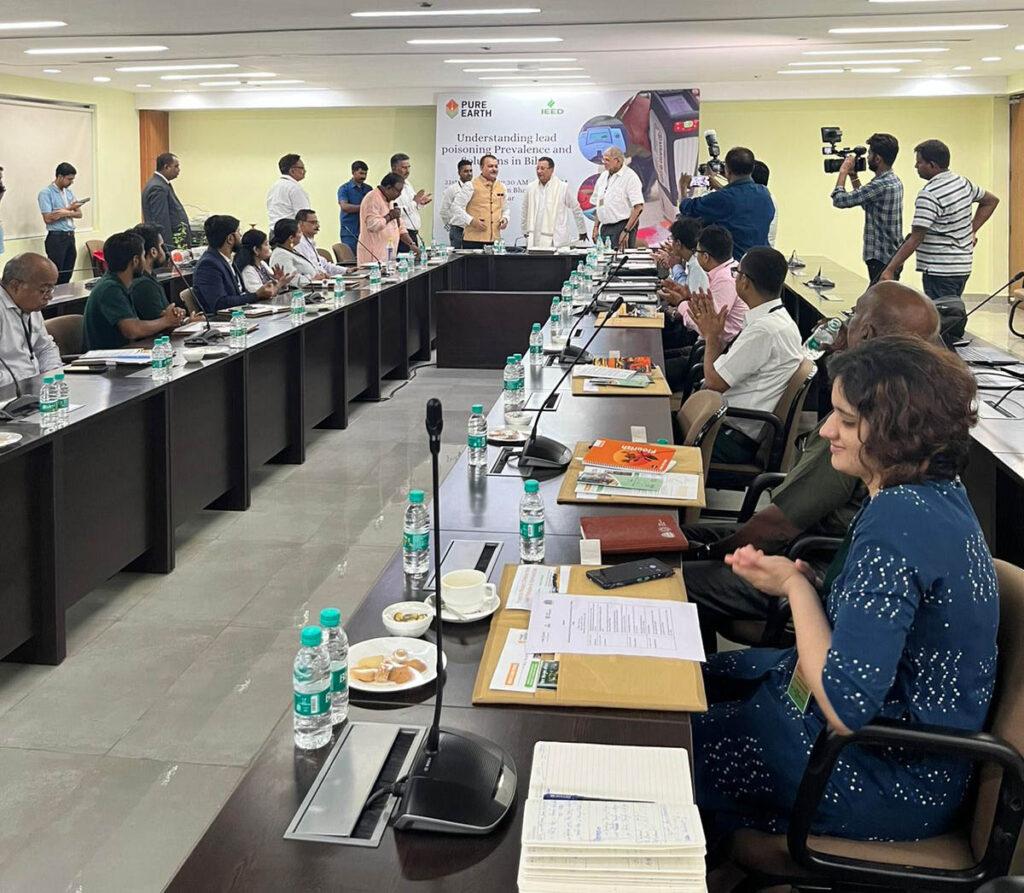
Lavanya Nambiar, Acting Country Director, Pure Earth, has raised the alarm over high lead levels in the blood of children and pregnant women in Bihar. The findings has revealed that turmeric, chili and coriander powders are contaminated with lead, with levels as high as 4000 ppm, which is approximately 400 times the Food Safety and Standards Authority of India (FSSAI) standard. The stakeholders present at the conference pledged to prioritize the protection of children’s future and work on the recommendations of experts to eliminate lead poisoning in the state.
We received an excellent response from the media, and almost all prominent state newspapers covered the event. Below is a snapshot of the media coverage.
Support for this work comes from GiveWell and Open Philanthropy.
